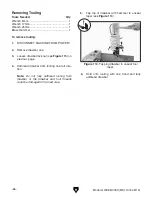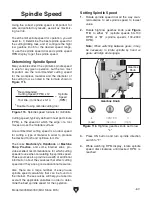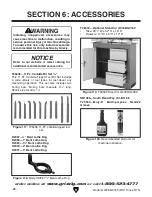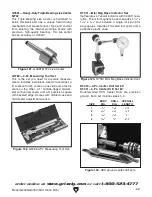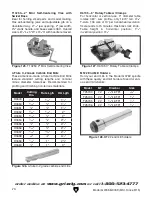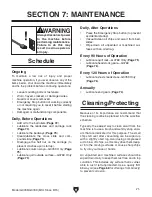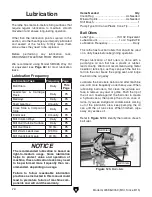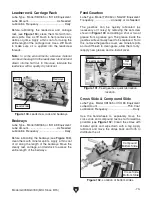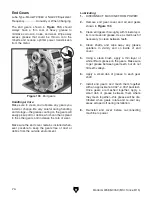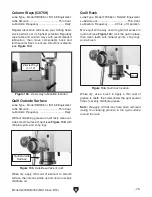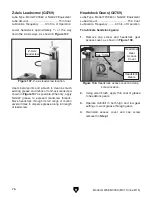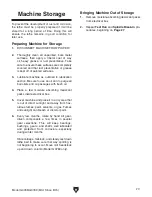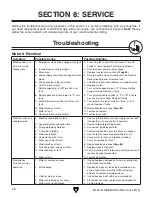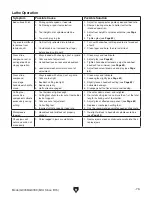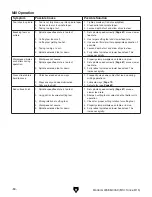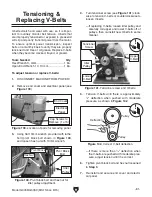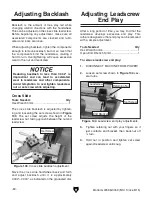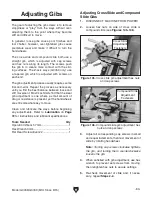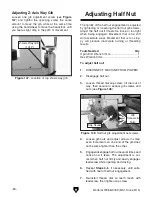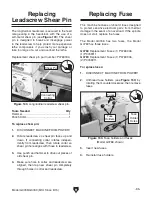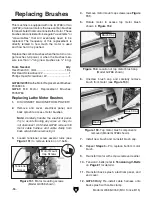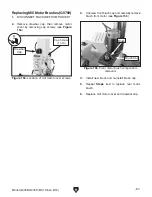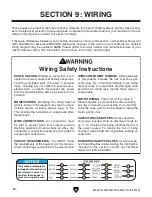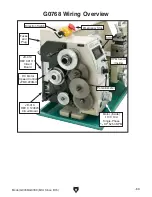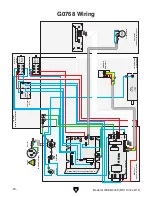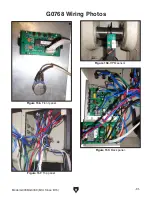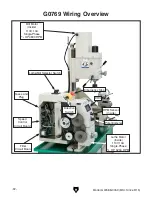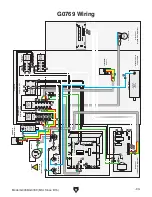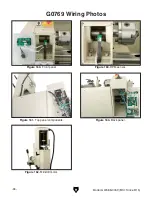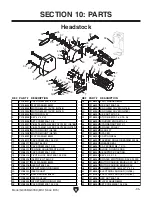
-80-
Model G0768/G0769 (Mfd. Since 8/15)
Mill Operation
Symptom
Possible Cause
Possible Solution
Tool slips in spindle. 1. Tool is not fully drawn up into spindle taper.
2. Debris on tool or in spindle taper.
3. Taking too big of cut.
1. Tighten drawbar (Do not overtighten).
2. Clean collet and spindle taper.
3. Lessen depth of cut and allow chips to clear.
Breaking tools or
cutters.
1. Spindle speed/feed rate is too fast.
2. Cutting tool too small.
3. Cutting tool getting too hot.
4. Taking too big of a cut.
5. Spindle extended too far down.
1. Set spindle speed correctly (
Page 67) or use slower
feed rate.
2. Use larger cutting tool and slower feed rate.
3. Use coolant fluid or oil for appropriate application if
possible.
4. Lessen depth of cut and allow chips to clear.
5. Fully retract spindle and lower headstock. This
increases rigidity.
Workpiece vibrates
or chatters during
operation.
1. Workpiece not secure.
2. Spindle speed/feed rate is too fast.
3. Spindle extended too far down.
1. Properly clamp workpiece on table or in vise.
2. Set spindle speed correctly (
Page 67) or use slower
feed rate.
3. Fully retract spindle and lower headstock. This
increases rigidity.
Cross slide table is
hard to move.
1. Chips have loaded up on ways.
2. Ways are dry and need lubrication.
3. Gibs are too tight.
1. Frequently clean away chips that load up during
milling operations.
2. Lubricate ways (
Page 73).
3. Adjust gibs (see
Page 83
)
.
Bad surface finish.
1. Spindle speed/feed rate is too fast.
2. Using dull or incorrect cutting tool.
3. Wrong rotation of cutting tool.
4. Workpiece not secure.
5. Spindle extended too far down.
1. Set spindle speed correctly (
Page 67) or use a
slower feed rate.
2. Sharpen cutting tool or select one that better suits
operation.
3. Check for proper cutting rotation for cutting tool.
4. Properly clamp workpiece on table or in vise.
5. Fully retract spindle and lower headstock. This
increases rigidity.

